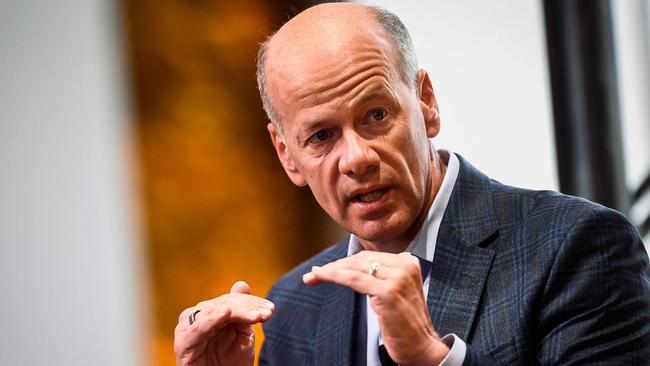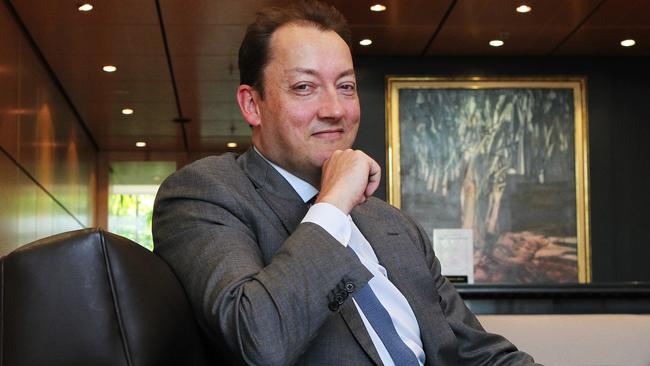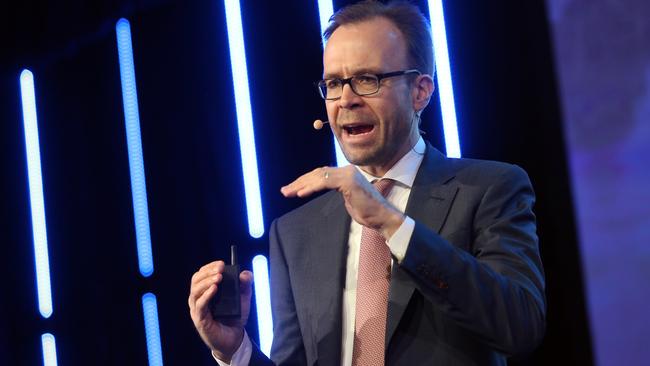SVB’s demise may be enough to encourage a rates pause by RBA and US Federal Reserve
The collapse of two regional US banks could encourage the US Fed to not shift rates at its March meeting, says Goldman Sachs.

The collapse of two regional US banks is a timely reminder that the full financial and economic impact of the post-pandemic surge in interest rates is yet to be seen.
The sharemarket is unlikely to have priced that in, so it’s hard to get too bullish right now.
S&P 500 futures surged 1.9 per cent after the Fed announced a new funding plan and Goldman Sachs scrapped its prediction of a March rate rise by the Fed – and casts doubt on the future increases.
But the Australian sharemarket wasn’t convinced that the US jump would be sustained.
The ASX 200 closed down 0.5 per cent at a nine-month low of 7108.8 as banks weighed on it.
The Fed announced a Bank Term Funding Program, offering loans of up to a year to US financial institutions pledging US Treasuries and other qualifying assets as collateral – at face value rather than the market prices realised by SVB – plus a $US25bn backstop from the Exchange Stabilisation Fund.
The announcement was strategically timed for maximum damage to short sellers, as it came at the least liquid time of the trading week. A further policy response to the collapse of Silicon Valley Bank and Signature Bank is likely if the share market goes into a spin and corporate credit spreads widen.
This sets risk assets up for heightened volatility in both directions, but more to the downside until it becomes clear that the Fed has “blinked” on monetary policy, as Goldman Sachs now predicts.
While the Fed’s policy funding announcement seemingly allayed initial fears about a widespread run on the US banks, SVB and Signature Bank are unlikely to be the only US banks that run into trouble amid surging interest rates, according to Bell Asset Management CIO Ned Bell.

He expects US regional banks customers to keep withdrawing losing deposits this week and while it gives the Fed reason not to accelerate its rate hikes – and hence the US equity market could well have a modest relief rally – he says the “inflation problem facing the Fed doesn’t go away”.
Crucial here will be the release of February US CPI data early Thursday Australian time.
“The US jobs market remains incredibly resilient, so interest rates will most likely keep ticking higher and any hope for a pivot (to rate cuts) will remain just that,” Mr Bell said.
Overall, he thinks the “inevitable cracks” caused by such a rapid increase in interest rates in a short period of time are only just starting to been seen.
“We have lived through a prolonged period of record low interest rates and equity markets remain riddled with loss making companies with questionable capital positions,” he said.
Goldman Sachs global chief economist Jan Hatzius said the Fed’s new loan facility will “provide substantial liquidity to banks facing deposit outflows and to improve confidence among depositors”.
But he said that “in light of recent stress in the banking system, we no longer expect the FOMC to deliver a rate hike at its March 22 meeting”.

While keeping unchanged his expectation that the FOMC will deliver 25bp hikes in May, June, and July and predicting a terminal Fed funds rate of 5.25-5.5 per versus 5.5-5.75 per cent previously expected, Mr Hatzius saw “considerable uncertainty about the path”.
Other US economists were yet to respond to the latest developments.
But it was increasingly clear that for the Fed to hike by 50 basis points this month would be a “mistake”, according to Pepperstone’s head of research, Chris Weston.
While Australian companies didn’t disclose “material” exposures as of Monday, it seems likely that if the Fed were to pause this month, the RBA would do the same in April, partly because of the sense of systemic risk but also because a pause could be justified by the data and the lags involved.
The market-implied chance of the RBA raising the cash rate by another 25 basis points next month fell to 8 per cent on Monday from 35 per cent on Friday, and the market-implied “terminal rate” dived to 3.83 per cent from 3.97 per cent. Earlier this month, terminal rate pricing hit 4.3 per cent.
In the US, the market went from being 68 per cent priced for a 50 basis point rate hike next week to just under fully priced for a 25 basis point rate hike, and the implied terminal Fed funds rate fell from 5.28 per cent to 5.04 per cent.
“All up, however, now that the genie is out of the bottle, my sense is this won’t be cleared up quickly – meaning the Fed may need to pass on raising rates again at the next meeting,” said Betashares chief economist David Bassanese.
“Depending on the fallout in the next few days, the mayhem will likely be enough to encourage the RBA to pause at the April meeting also.”




To join the conversation, please log in. Don't have an account? Register
Join the conversation, you are commenting as Logout